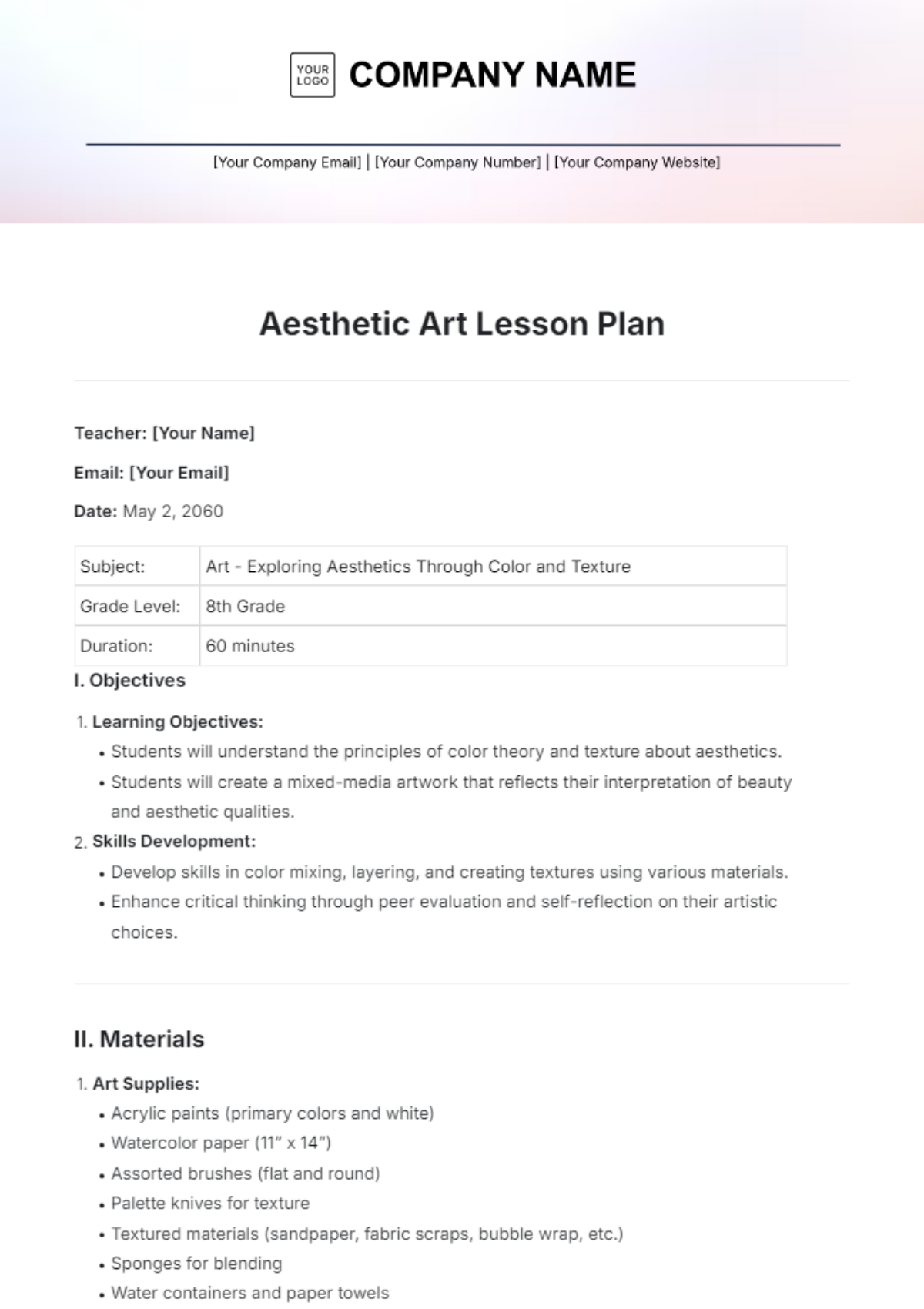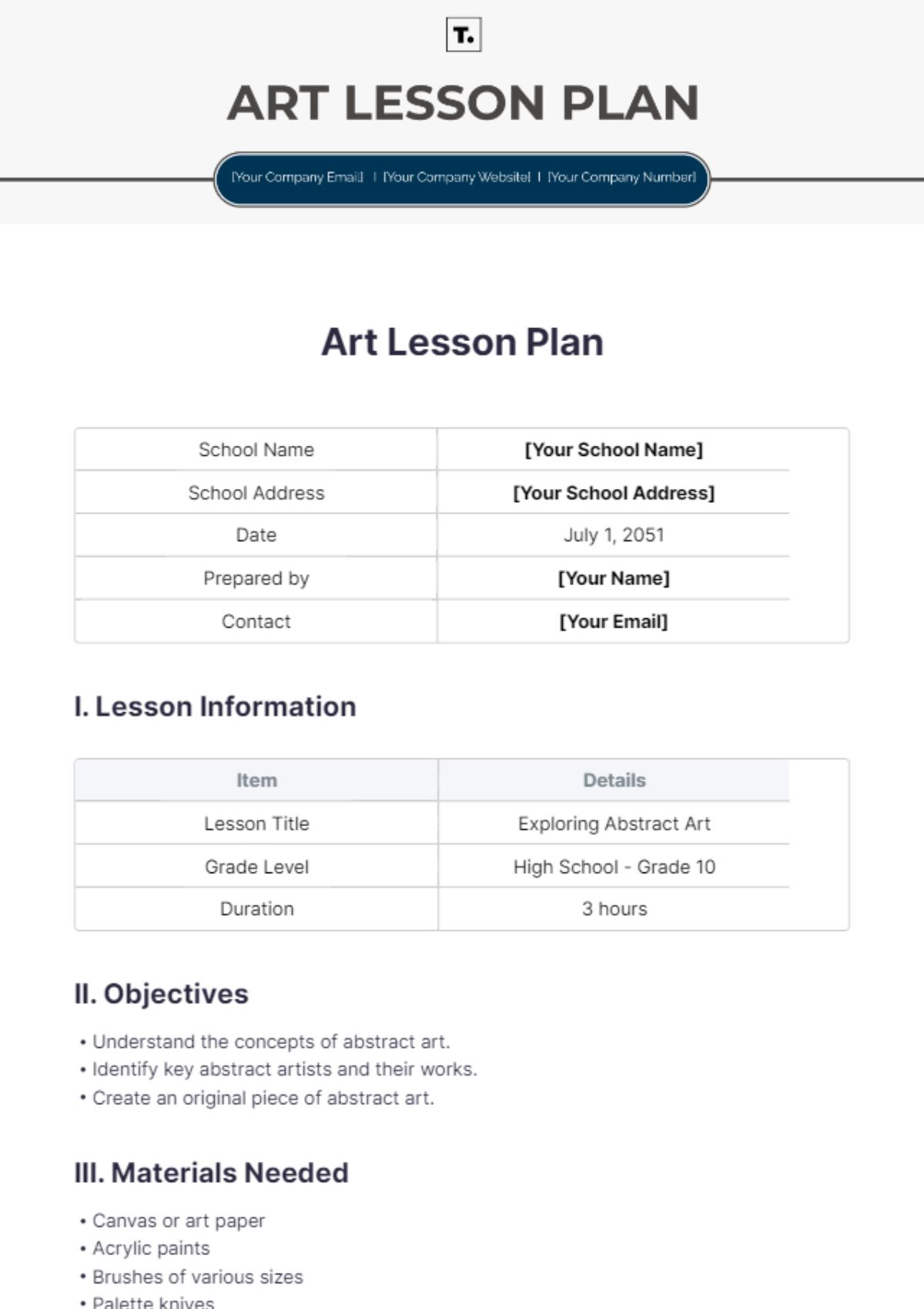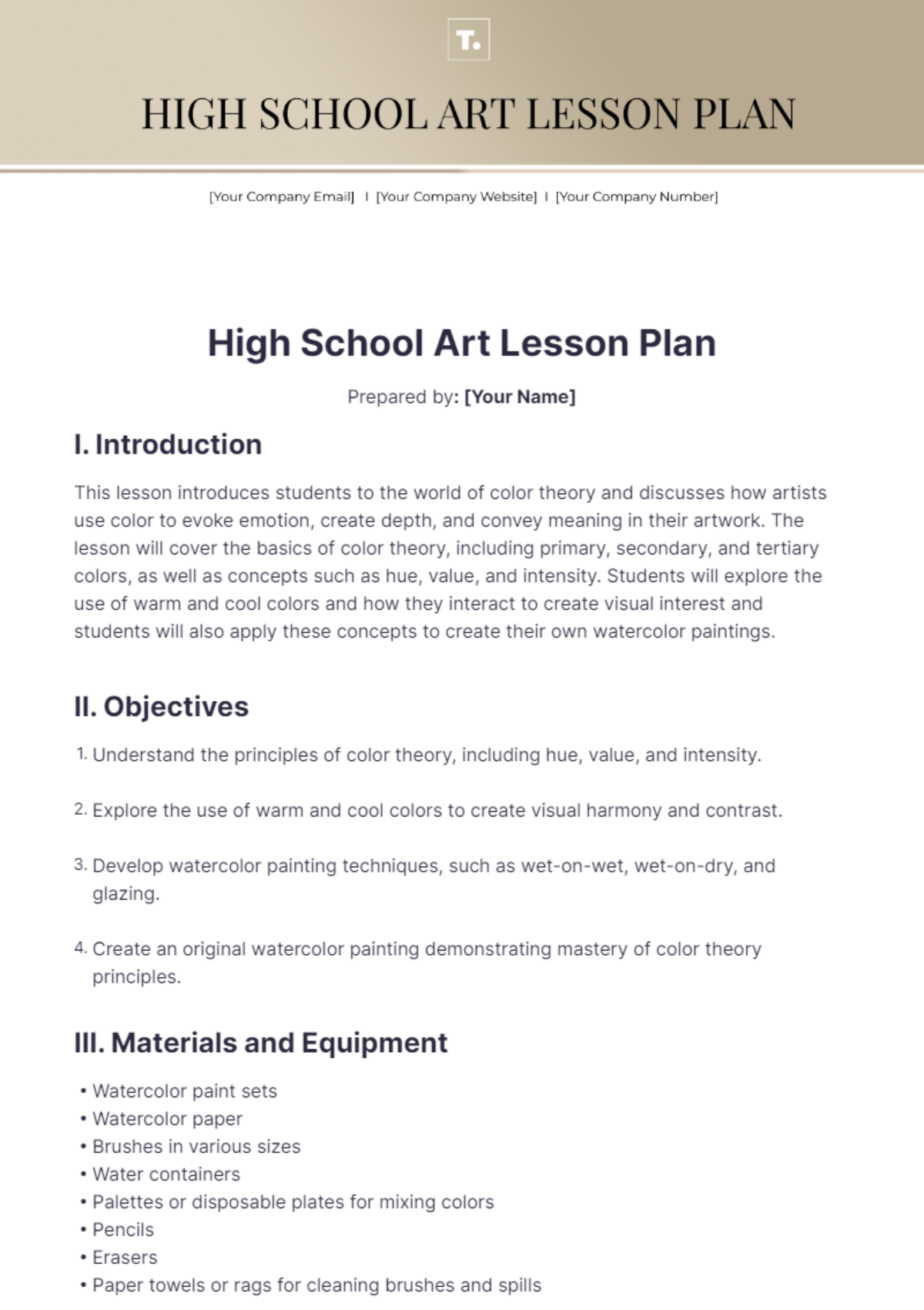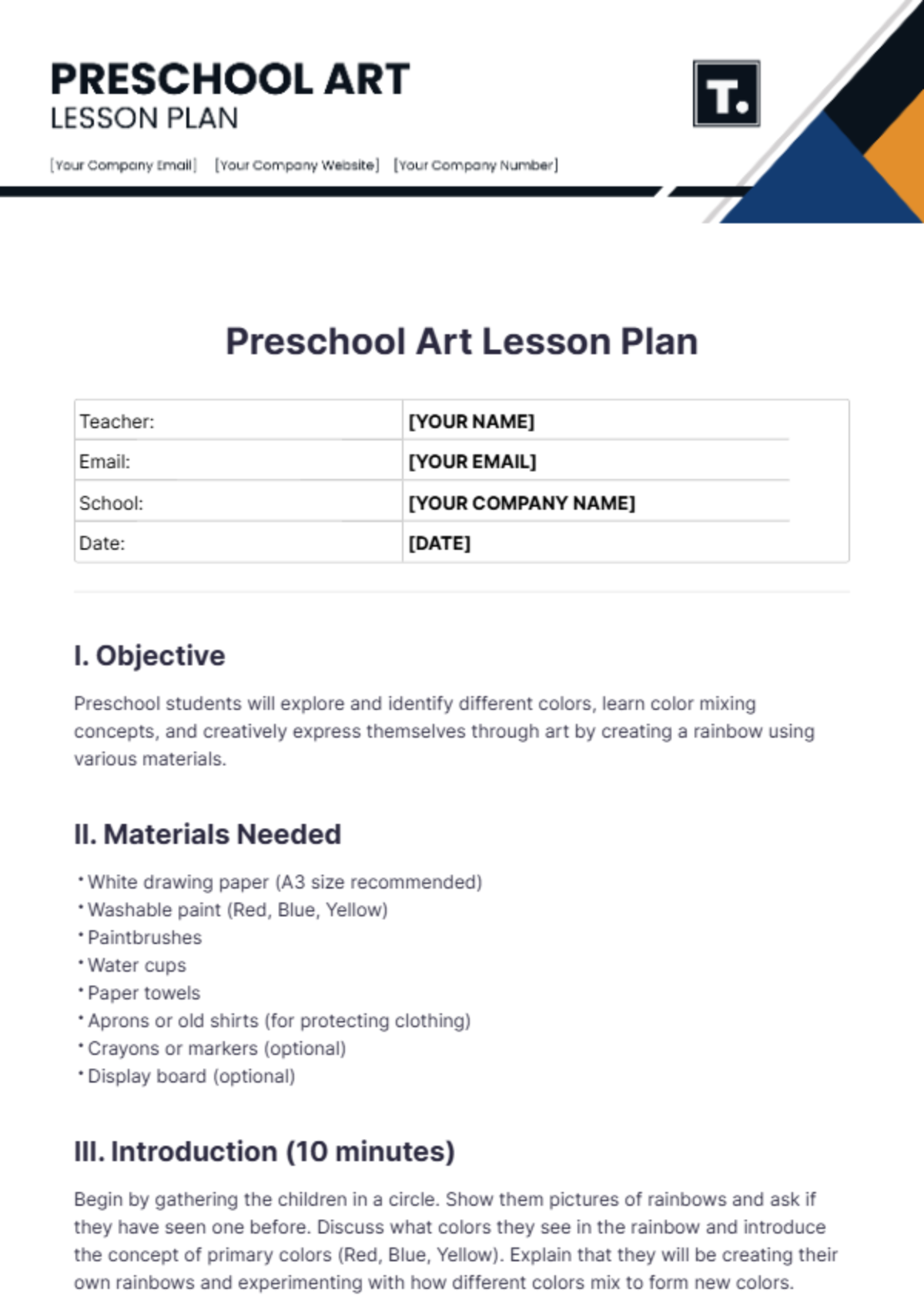Free Elementary Art Lesson Plan
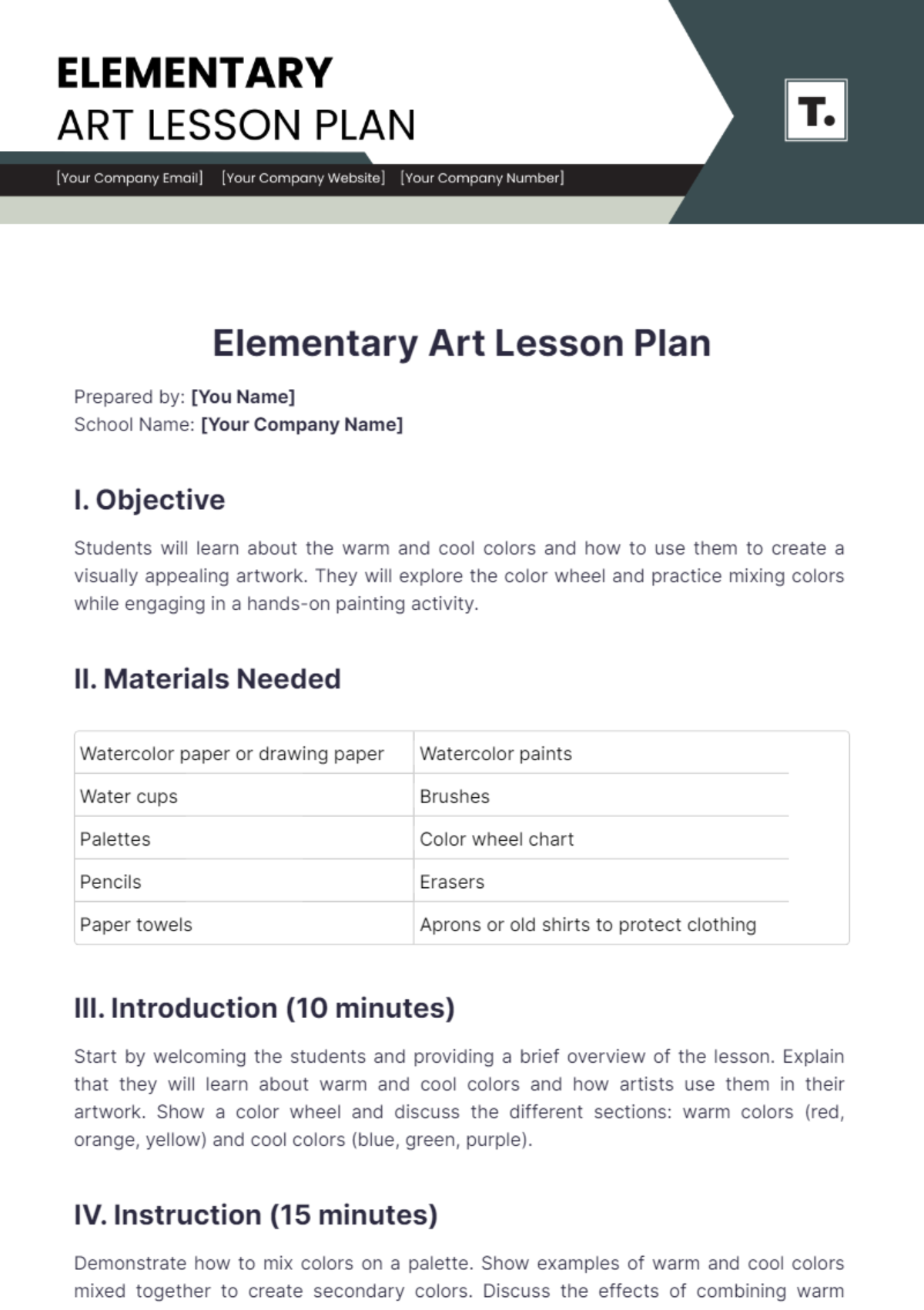
- 100% Customizable, free editor
- Access 1 Million+ Templates, photo’s & graphics
- Download or share as a template
- Click and replace photos, graphics, text, backgrounds
- Resize, crop, AI write & more
- Access advanced editor
Inspire young artists with the Elementary Art Lesson Plan Template from Template.net. This customizable, downloadable, and printable template provides a comprehensive framework for planning effective elementary art lessons. With editable features in our AI Editor Tool, tailor the plan to your specific needs. Ensure organized and engaging art instruction with this invaluable resource.
You may also like
Elementary Art Lesson Plan
Prepared by: [You Name]
School Name: [Your Company Name]
I. Objective
Students will learn about the warm and cool colors and how to use them to create a visually appealing artwork. They will explore the color wheel and practice mixing colors while engaging in a hands-on painting activity.
II. Materials Needed
Watercolor paper or drawing paper | Watercolor paints |
Water cups | Brushes |
Palettes | Color wheel chart |
Pencils | Erasers |
Paper towels | Aprons or old shirts to protect clothing |
III. Introduction (10 minutes)
Start by welcoming the students and providing a brief overview of the lesson. Explain that they will learn about warm and cool colors and how artists use them in their artwork. Show a color wheel and discuss the different sections: warm colors (red, orange, yellow) and cool colors (blue, green, purple).
IV. Instruction (15 minutes)
Demonstrate how to mix colors on a palette. Show examples of warm and cool colors mixed together to create secondary colors. Discuss the effects of combining warm colors vs. cool colors in a painting. Introduce students to watercolor techniques such as wet-on-wet, wet-on-dry, and blending.
V. Guided Practice (20 minutes)
Hand out materials to students. Ask them to start by sketching a simple picture on their watercolor paper, such as a landscape or abstract design. Have them decide which sections will be painted with warm colors and which with cool colors. Encourage them to experiment with blending and mixing colors on their palette before applying it to their paper.
VI. Independent Practice (10 minutes)
Allow students to continue working on their paintings independently. Walk around the classroom to provide assistance and feedback. Ask questions to guide their thinking and encourage creativity, such as "Why did you choose these colors?" and "What effect are you trying to achieve?"
VII. Closure (5 minutes)
Have students clean up their materials and workspace. Gather the class and allow students to share their artwork with the group. Encourage them to talk about the use of warm and cool colors in their paintings. Summarize the key points of the lesson and praise their effort and creativity.
VIII. Assessment
Assess students based on their participation in the discussion, their ability to mix and use warm and cool colors effectively, and the creativity demonstrated in their final artwork. Provide positive feedback and constructive suggestions where needed.
IX. Extension
If time allows or for a follow-up lesson, students can create a second artwork focusing on using only warm colors or only cool colors to explore how it changes the mood and feeling of their composition.
